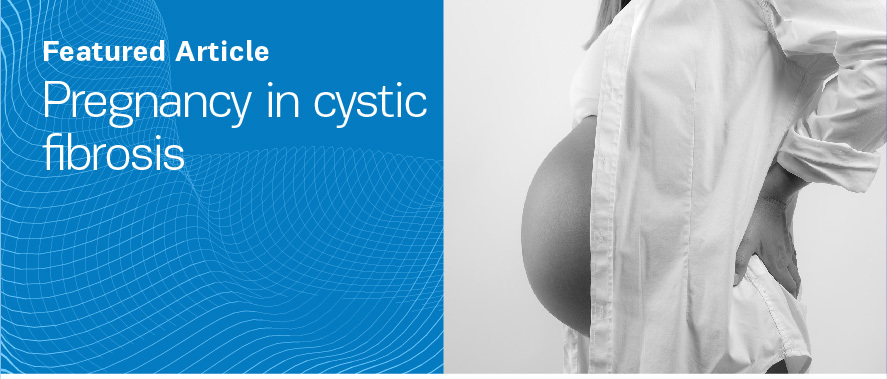INTRODUCTION
Over the last 50 years, survival in people with cystic fibrosis (CF) has risen impressively. CF has been considered as a pediatric disease but the majority of patients in Europe are now adults1; and this change has inevitably led to concerns about parenthood among people with CF (PWCF)2. Although men with CF are almost without exception azoospermic, women with CF are generally capable of conceiving and carrying out a normal pregnancy. However, infertility or subfertility in women with CF is considered to be 15–30% higher than in general population3. An increase has been reported in the number of pregnancies in women with CF over time and many cases of unplanned pregnancies have been reported, after use of CFTR modulators, possibly because women considered themselves infertile. It is believed that CFTR modulators improve female fertility mainly by changing quality of cervical mucous secretions4.
CASE PRESENTATION
Οver the last decade, nine pregnancies were carried by 7 women with CF, in the Adult CF Centre, G. Papanikolaou Hospital of Thessaloniki, Greece. All data were extracted after the women gave their informed consent. Two women had 2 pregnancies each and one had a twin pregnancy leading to 10 children overall. Women had a mean age of 33 years and a mean BMI of 21 and 20 (kg/m2) before and after pregnancy, respectively. Five women had chronic infection with Pseudomonas aeruginosa and five needed hospitalization for exacerbation and intravenousantibiotics during pregnancy. Final outcome was successful in all cases with a mean of 36 weeks gestation. In Table 1, characteristics and pulmonary function are shown before and after delivery in all pregnant women. A mean decrease of about 200mL in FEV1 and 300mL in FVC were observed after delivery. The higher decrease was noted in case of twin pregnancy (Patient 6, Table 1). All women slowly regained their spirometric values within 6 months after delivery.
Table 1
Characteristics and pulmonary function before and after delivery in seven pregnant women
Two pregnancies took place under CFTR modulators. One woman was under lumacaftor/ivacaftor, and the other under elexacaftor/tezacaftor/ivacaftor (ETI). Both women decided to continue CFTR modulators. Interestingly, the second woman who had significantly improved after ETI initiation, was not willing to take the risk of discontinuing the medication despite the lack of data on its safety at that time. The woman was aged 41 years and had one F508del and one minimal function mutation. She also had diabetes mellitus under insulin therapy, pancreatic insufficiency and a chronic infection of P. aeruginosa. As shown in Table 2, her respiratory function improved during pregnancy in contrast to what was anticipated. She also continued insulin, formoterol, budesonide and vitamins, and she started LMWH in a prophylactic dose. No exacerbation was noted and the improvement was retained after delivery. She delivered a full-term baby of 3.350 kg, which is the first baby born to a mother under ETI in Greece. The newborns’ transaminases were normal and signs of cataract were not present.
DISCUSSION
ETI combination therapy exceeded the clinical benefit that previous CFTR modulators have shown. Ivacaftor functions as a potentiator of the CFTR protein for common gating mutations, allowing an increase in chloride ion flow5. Tezacaftor functions as a corrector to facilitate the folding and presentation of the mature CFTR protein to the cell surface, improving CFTR function for the F508del mutation6. Elexacaftor is a next-generation CFTR corrector that works at an alternate binding site than tezacaftor on the CFTR protein to further facilitate the functionality of the CFTR protein at the cell surface7. When they are used in combination, elexacaftor, tezacaftor, and ivacaftor indicate an increase in function of the F508del mutated CFTR protein at the cell surface resulting in increased chloride ion transport8. ETI is now indicated in people with CF with at least one F508del mutation9-11.
During pregnancy, CFTR modulators are to be avoided due to a lack of or limited data5. However, data that have been collected from animal reproductive models suggest that the components of the new and very effective triple combination elexacaftor-tezacaftor-ivacaftor (ETI), do not cause teratogenicity at normal human doses. No adverse impact of CFTR modulators on fetal chromosomes, organogenesis or survival is reported up to now. Cataract has been reported to develop in children exposed to Ivacaftor3.
Continuing therapy during pregnancy is associated with unknown fetal impact, nevertheless the decision to discontinue therapy is related to the known risk of maternal health decline. In our center, both women on CFTR modulators were clearly in favor of continuing their medication despite the risk. The decision was easy to make and a successful result was the award.
Small number of case series of pregnancies under CFTR modulators have been published over the last few years. In the largest study to date on the effect of ETI on 45 pregnancies, the miscarriage rate was as expected in the general population. Complications possibly related to ETI use were noted in 2 mothers and 3 infants; 5 out of 6 women who discontinued the triple combination during pregnancy had to restart, because of clinical deterioration12.
The ERS/TSANZ TASK force statement for pregnancy in women with airway diseases concluded that, despite limited, data CFTR modulators are of low risk and their use is probably safe during human pregnancy13. A prospective multi-center clinical trial called MAYFLOWERS is designed to enroll 285 pregnancies with or without CFTR modulators for a 35-month observation. This trial is expected to describe detailed outcomes in pregnancy and lactation in relation with CFTR modulators, but with, and also pre- existing, comorbid conditions14.
CONCLUSION
As a great number of CF people are now eligible for highly effective CFTR modulators, data from prospective trials are needed to provide evidence-based recommendations to women contemplating pregnancy. Until then, clinicians and patients should weigh the potential risk or clinical decline for fetus and mother, respectively.



